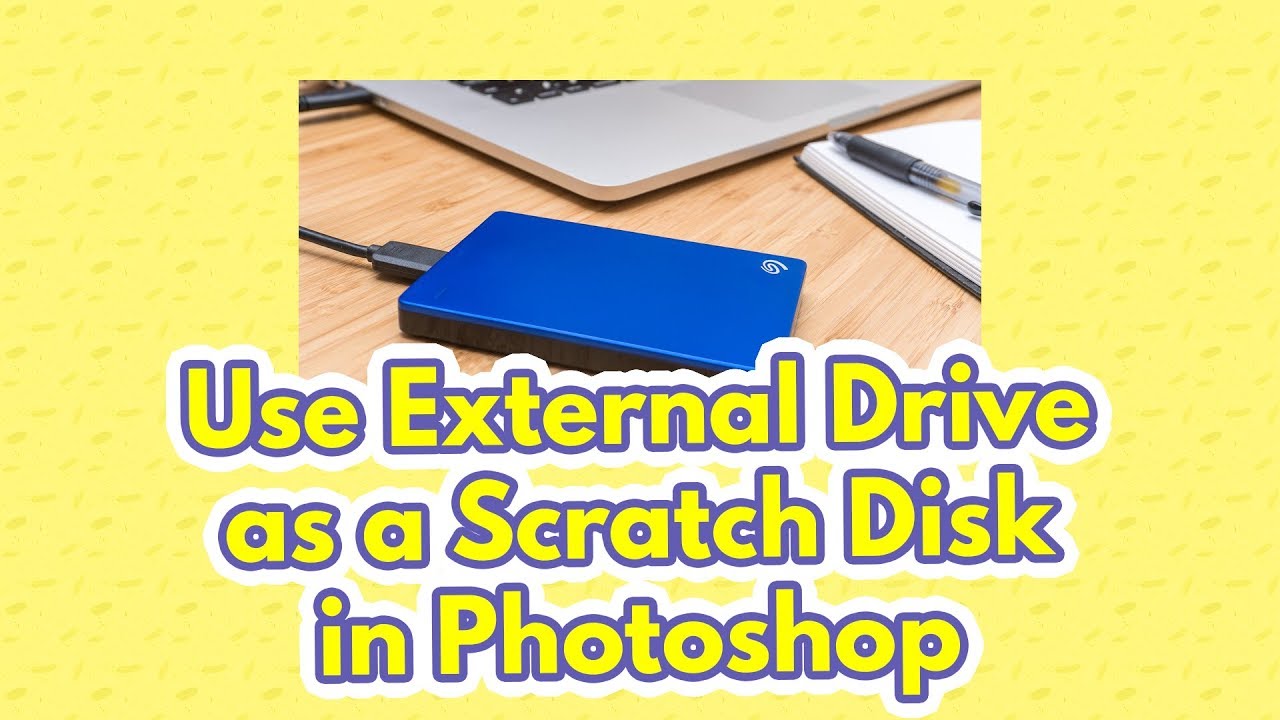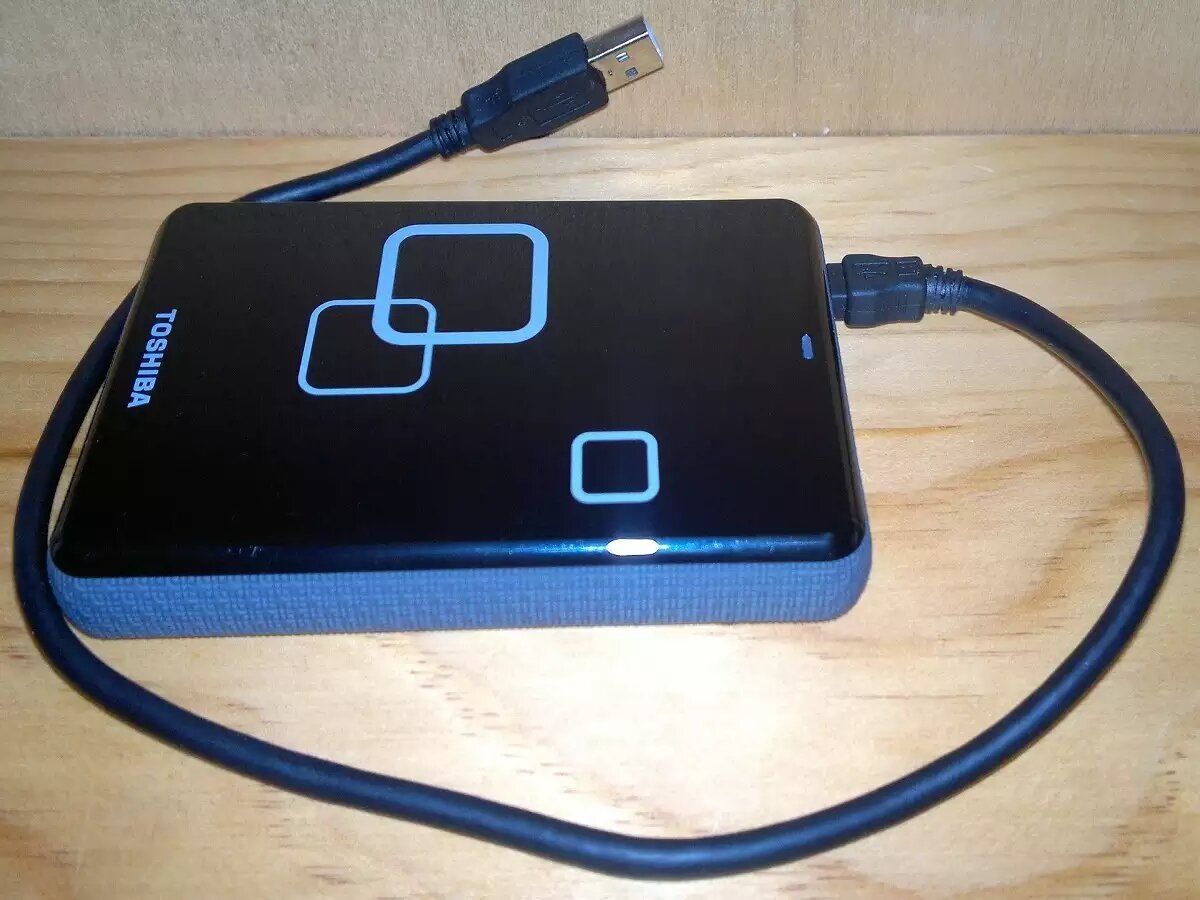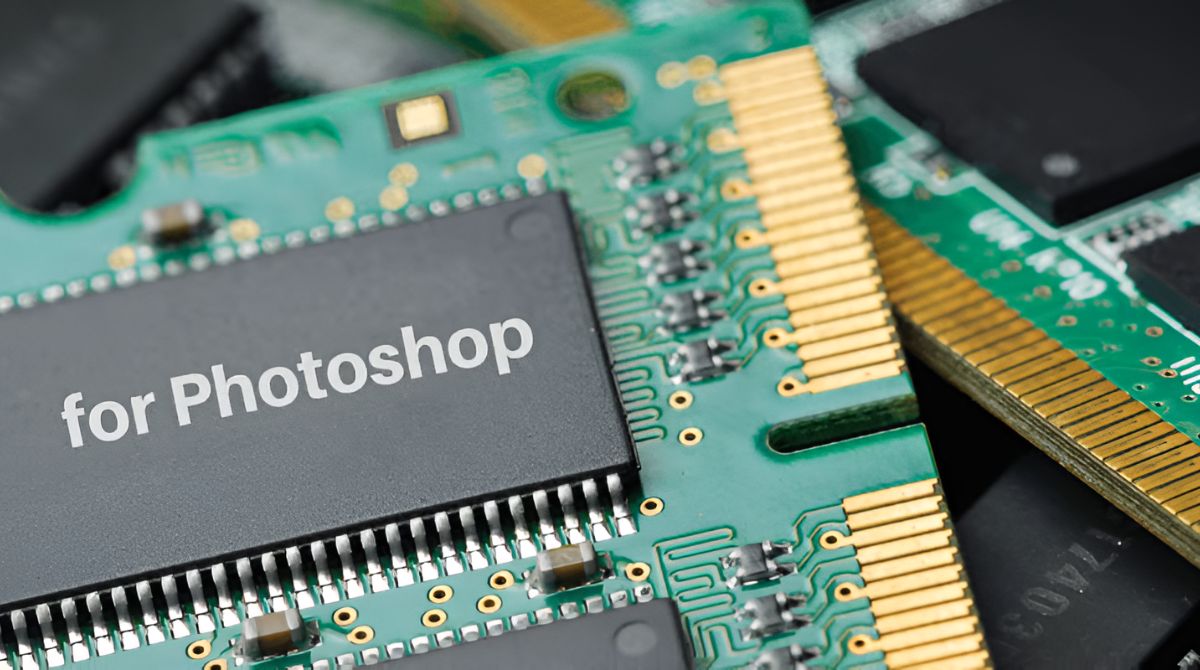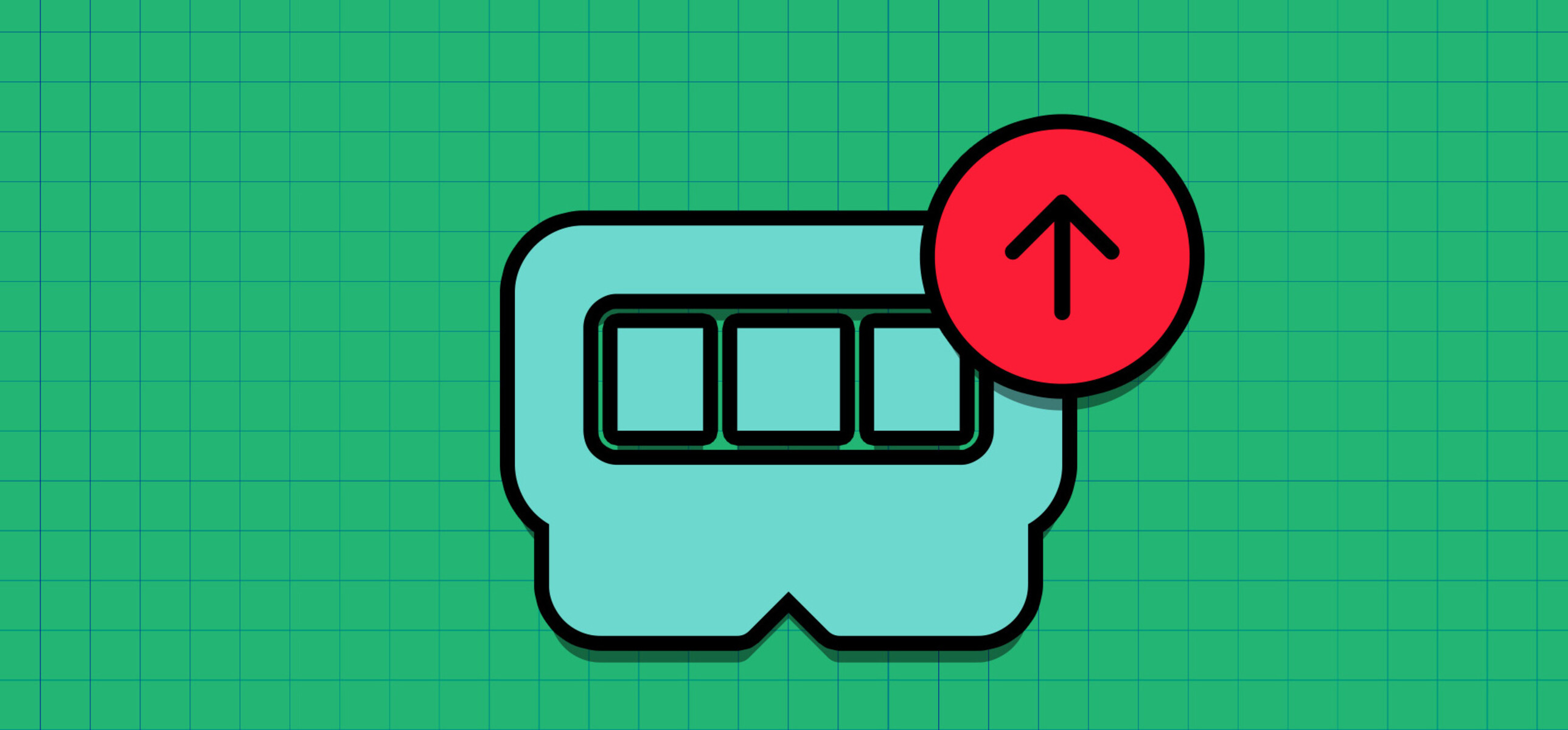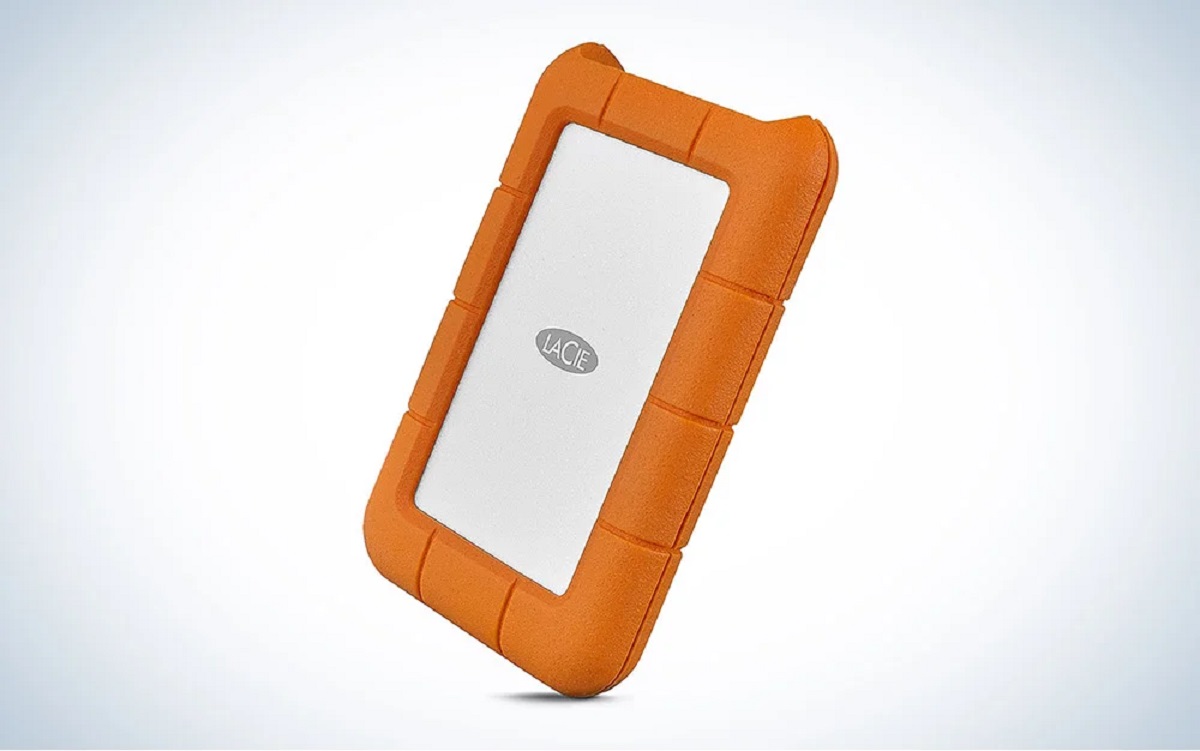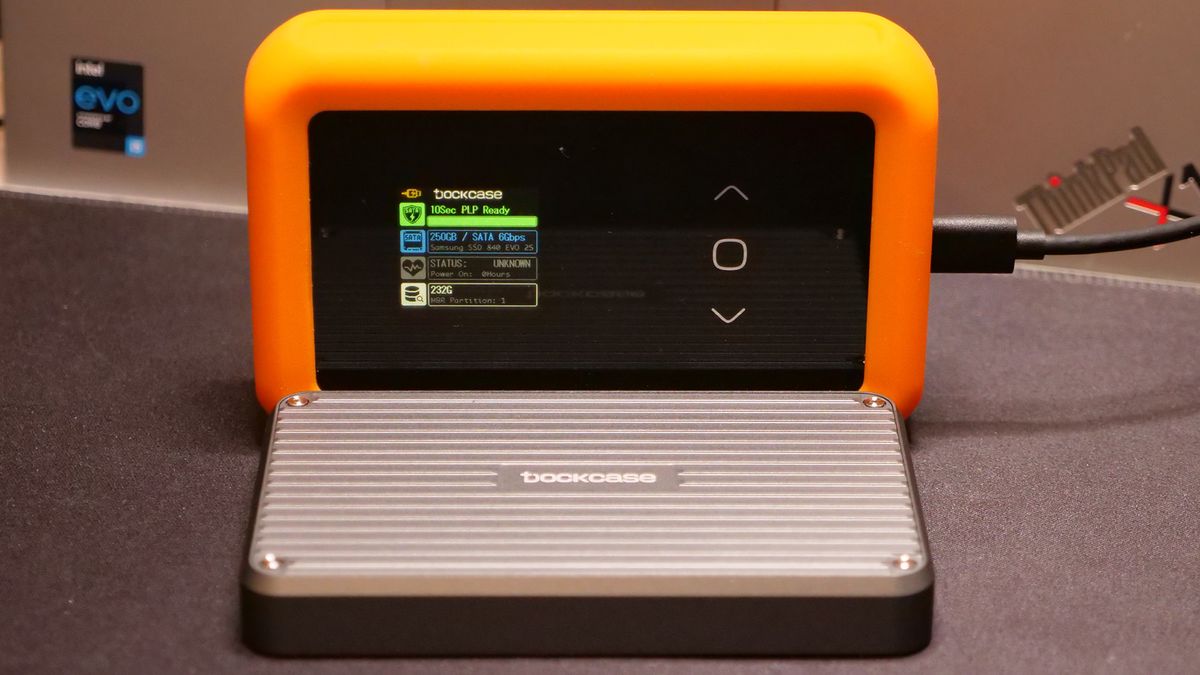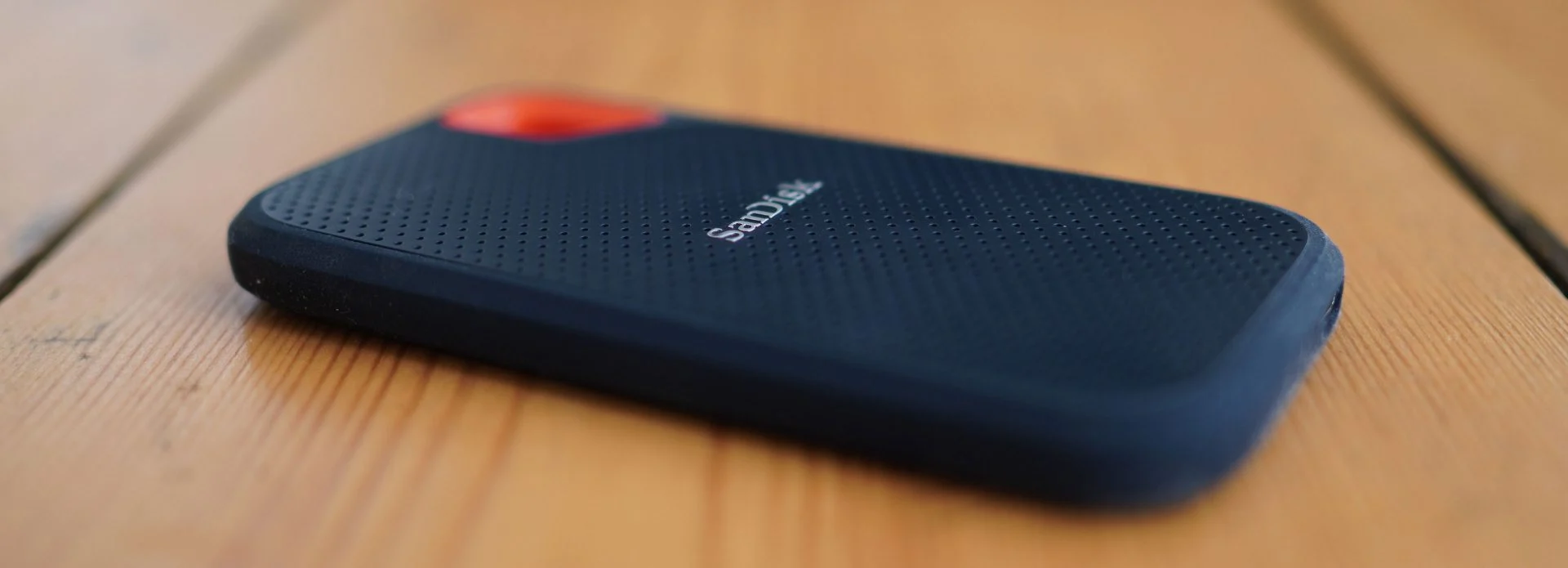Introduction
Welcome to our guide on how to add an external hard drive as a scratch disk in Photoshop. If you’re a professional photographer or graphic designer who frequently works with large files and resource-intensive tasks in Photoshop, you’re probably familiar with the frustration of slow processing speeds and lagging performance. This is where utilizing an external hard drive as a scratch disk can make a significant difference.
A scratch disk is a designated storage location that Photoshop uses for temporary files when the available RAM is insufficient. By adding an external hard drive as a scratch disk, you can offload the processing burden from your computer’s internal hard drive, resulting in improved performance and reduced strain on your system.
In this guide, we’ll take you through the step-by-step process of setting up and using an external hard drive as a scratch disk in Photoshop. We’ll cover everything from choosing the right external hard drive and formatting it correctly to configuring the scratch disk preferences in Photoshop. We’ll also provide tips on optimizing your external hard drive for optimal Photoshop performance.
Whether you’re working on high-resolution photos, complex illustrations, or multi-layered designs, utilizing an external scratch disk can greatly enhance your Photoshop experience. Not only will it help you work more efficiently, but it will also ensure smoother operations and prevent frustrating crashes or slowdowns.
So, if you’re ready to supercharge your Photoshop workflow and take advantage of the benefits of using an external scratch disk, let’s dive in and get started with the first step – choosing the right external hard drive.
Why Use an External Hard Drive as a Scratch Disk in Photoshop
If you’ve ever worked on large Photoshop projects or dealt with resource-intensive tasks, you know how frustrating it can be when your computer starts to slow down or freeze. This is where utilizing an external hard drive as a scratch disk in Photoshop can be a game-changer.
Here are a few reasons why you should consider using an external hard drive as a scratch disk:
- Increased Performance: By offloading the scratch disk function to an external hard drive, you can alleviate the burden on your computer’s internal hard drive. This allows Photoshop to operate faster and more efficiently, resulting in improved performance and reduced lag.
- More Storage Space: Photoshop generates temporary files while you’re working on projects, which can take up a significant amount of space. By using an external hard drive as a scratch disk, you can free up valuable storage space on your computer’s internal drive.
- Flexibility and Portability: An external hard drive allows you to easily move your scratch disk between different computers or workstations. This is particularly useful if you work on multiple devices or collaborate with others, as you can seamlessly switch between machines without losing your scratch disk setup.
- Protecting Your Internal Hard Drive: Constant read and write operations, especially with large files, can put strain on your computer’s internal hard drive. By using an external hard drive as a scratch disk, you can extend the lifespan of your internal drive and avoid potential hardware failures.
- Organized File Management: By dedicating a separate external hard drive as a scratch disk, you can keep your project files and scratch files separate. This can help with file organization and make it easier to locate and manage your Photoshop projects.
Overall, using an external hard drive as a scratch disk in Photoshop can significantly improve your workflow, enhance performance, and provide you with more flexibility and storage space. So, let’s move on to the next step and learn how to choose the right external hard drive for your needs.
Step 1: Choosing the Right External Hard Drive
When it comes to selecting the right external hard drive for use as a scratch disk in Photoshop, there are a few key factors to consider. Choosing the appropriate external hard drive ensures optimal performance and compatibility with your system. Here are some important aspects to keep in mind:
- Storage Capacity: The storage capacity of the external hard drive is one of the most crucial factors to consider. It depends on the size and complexity of your projects. If you frequently work on large files or perform resource-intensive tasks, it’s advisable to choose a high-capacity external drive to avoid running out of space.
- Speed: The speed of the external hard drive is essential for efficient scratch disk operations. Look for hard drives with higher RPM (rotations per minute) as they tend to provide faster data transfer rates. Solid-state drives (SSDs) offer even faster speeds compared to traditional hard drives but may come at a higher price.
- Interface: Consider the interface options available on the external hard drive and ensure compatibility with your computer. USB 3.0 and USB-C are common and versatile options, providing fast data transfer speeds. If your system supports Thunderbolt or eSATA, these interfaces can offer even faster performance.
- Reliability: Look for external hard drives from reputable brands known for their reliability and durability. Read customer reviews and check for features like shock resistance and data protection mechanisms to ensure your files are safe.
- Portability: If you need to work on your projects across different locations or with multiple devices, consider an external hard drive that is lightweight and portable. Look for compact options that can easily fit in your bag without compromising on storage capacity.
- Budget: Set a budget for your external hard drive purchase, keeping in mind the features and specifications you require. Compare prices, read reviews, and make an informed decision based on the best value for your budget.
By considering these factors, you can select an external hard drive that meets your Photoshop requirements and enhances your workflow. Once you have chosen the right external hard drive, it’s time to move on to the next step – formatting the drive for use as a scratch disk in Photoshop.
Step 2: Formatting the External Hard Drive
Formatting the external hard drive correctly is crucial to ensure compatibility and optimal performance as a scratch disk in Photoshop. Follow these steps to format the drive:
- Backup: Before proceeding with the formatting process, make sure to back up any important files or data stored on the external hard drive. Formatting erases all existing data on the drive, so it’s essential to have a backup to prevent data loss.
- Connect the Drive: Connect the external hard drive to your computer using the appropriate interface cable. Ensure that the drive is detected and visible in your operating system’s file explorer.
- Open Disk Utility (Mac) or Disk Management (Windows): On Mac, go to Applications > Utilities > Disk Utility. On Windows, right-click the Start menu and select Disk Management from the list of options.
- Select the External Hard Drive: In the Disk Utility (Mac) or Disk Management (Windows) window, locate and select the external hard drive from the list of available drives. Double-check that you have the correct drive selected to avoid formatting the wrong drive.
- Format the Drive: Click on the Format option and choose the file system that is compatible with both your operating system and Photoshop. For Mac, use Mac OS Extended (Journaled). For Windows, choose NTFS or exFAT. Make sure to give the drive a suitable name.
- Start the Formatting Process: Confirm the formatting settings and click on the Start or Format button. Formatting may take some time depending on the size of the drive. Once the process is complete, you will receive a notification.
- Eject the Drive: After formatting is done, safely eject the external hard drive from your computer. This ensures that all changes take effect properly and prevents data corruption.
By following these steps, you can successfully format the external hard drive for use as a scratch disk in Photoshop. With the drive formatted, you’re now ready to move on to the next step – connecting the external hard drive to your computer.
Step 3: Connecting the External Hard Drive to Your Computer
Now that you have formatted your external hard drive, it’s time to connect it to your computer. Follow these steps to ensure a proper connection:
- Determine the Interface: Identify the interface used by your external hard drive, such as USB or Thunderbolt. Check if your computer has a corresponding port to connect the drive.
- Connect the Cable: Plug one end of the interface cable into the external hard drive and the other end into the appropriate port on your computer. Ensure a secure connection.
- Power On the Drive: If your external hard drive requires a separate power source, turn it on or connect it to a power outlet to supply the necessary power.
- Wait for Detection: Your computer should automatically detect the external hard drive. Depending on your operating system settings, you may receive a notification or see the drive appear in the file explorer.
- Verify the Connection: Open your operating system’s file explorer and navigate to the external hard drive. Confirm that you can access the drive and its contents. This ensures that the connection is established correctly.
- Eject and Disconnect: When you’re finished using the external hard drive or want to disconnect it, make sure to eject it properly to avoid data loss or corruption. On Mac, you can drag the drive to the Trash bin or click on the Eject button next to the drive’s name. On Windows, right-click the drive and select Eject from the context menu. Once ejected, safely disconnect the cable from the computer.
By following these steps, you can successfully connect your external hard drive to your computer. With the drive connected, you’re now ready to move on to the next step – setting up the external hard drive as a scratch disk in Photoshop.
Step 4: Setting Up the External Hard Drive as a Scratch Disk in Photoshop
To maximize the performance of your external hard drive as a scratch disk in Photoshop, you need to configure the appropriate settings within the software. Follow these steps to set up the external hard drive as a scratch disk:
- Launch Photoshop: Open Photoshop on your computer. The specific steps may vary slightly depending on your operating system, but you can typically find Photoshop in your applications folder or by searching for it in the Start menu.
- Access Preferences: Go to the top menu and click on “Edit,” then select “Preferences,” followed by “Scratch Disks.”
- Select the External Hard Drive: In the Scratch Disks preferences window, you will see a list of available drives. Locate and check the box next to your external hard drive to enable it as a scratch disk. You can also adjust the order of the scratch disks by clicking and dragging the drives up or down the list. Photoshop will prioritize using the scratch disk at the top of the list before moving to the next one.
- Allocate Space: By default, Photoshop uses the entire available space on the selected scratch disk. However, if you prefer to allocate a specific amount of space, you can enter a value in the “Space allocation” field for the external hard drive. Keep in mind that this value represents the maximum amount of space Photoshop can use on the drive.
- Confirm Changes: Once you have selected the external hard drive and allocated the desired space, click on the “OK” or “Apply” button to save the changes. Photoshop will now utilize the external hard drive as a scratch disk for temporary storage while working on projects.
With these steps completed, you have successfully set up your external hard drive as a scratch disk in Photoshop. This configuration ensures that Photoshop can efficiently utilize the external drive’s resources for improved performance and faster processing. Now that the scratch disk is set up, you can move on to the next step – adjusting scratch disk preferences in Photoshop.
Step 5: Adjusting Scratch Disk Preferences in Photoshop
After setting up your external hard drive as a scratch disk in Photoshop, you may want to fine-tune the scratch disk preferences to optimize performance. Follow these steps to adjust the scratch disk preferences:
- Access Preferences: Open Photoshop and go to the top menu. Click on “Edit” and select “Preferences,” followed by “Performance.”
- Choose Scratch Disk Order: In the Performance preferences window, you will find the “Scratch Disks” section. Here, you can view the order of the scratch disks you set up in the previous step. If you have multiple scratch disks, Photoshop will use them in the specified order from top to bottom. You can click on the arrow buttons to reorder the disks if necessary.
- Enable or Disable Scratch Disk Usage: If you want Photoshop to use a specific scratch disk or exclude certain disks from scratch disk usage, you can check or uncheck the boxes next to the respective drives in the “Scratch Disks” section.
- Adjust Cache Levels: Under the “History & Cache” section in the Performance preferences, you can modify the “Cache Levels” value. Increasing the cache levels may enhance performance when working with large files, but it also requires more scratch disk space. Experiment with different cache level values to find the optimum balance for your workflow.
- Specify Cache Tile Size: In the same “History & Cache” section, you can adjust the “Cache Tile Size” value. This setting determines the size of the image data that Photoshop stores in memory for quick access. Larger tile sizes can improve performance for tasks that involve large areas of continuous color, while smaller tile sizes are beneficial for images with fine details or patterns.
- Apply Changes: After making any desired adjustments to the scratch disk preferences, click on the “OK” or “Apply” button to save the changes. Photoshop will now utilize the modified settings for scratch disk usage.
By adjusting the scratch disk preferences in Photoshop, you can further optimize performance and customize the scratch disk usage to suit your specific needs. Take the time to experiment with different settings to find the configuration that provides the best performance for your workflow. Now that the scratch disk preferences are adjusted, you’re ready to move on to the next step – optimizing the external hard drive for Photoshop performance.
Step 6: Optimizing the External Hard Drive for Photoshop Performance
To ensure optimal performance when using an external hard drive as a scratch disk in Photoshop, it’s important to optimize the drive for maximum efficiency. Follow these steps to optimize your external hard drive:
- Defragmentation: If your external hard drive uses a traditional spinning disk (HDD), consider defragmenting it on a regular basis. This process rearranges fragmented data on the drive, resulting in faster read and write speeds. However, if your external drive is an SSD (Solid-State Drive), defragmentation is not necessary and can actually decrease its lifespan.
- Regular Maintenance: Perform regular maintenance tasks on your external hard drive, such as checking for errors and running disk cleanup utilities. These actions can help optimize drive performance by removing unnecessary files and ensuring system reliability.
- Keep the Drive Clean: Ensure that the external hard drive is free from dust, dirt, and physical damage. Keep it in a clean and cool environment to prevent overheating, which can affect performance and longevity.
- Avoid Overfilling: While it’s tempting to utilize the entire capacity of the external hard drive, it’s recommended to leave some free space. Aim to keep at least 10-15% of the drive’s total capacity free for optimal performance and to prevent file fragmentation.
- Regular Backups: Backing up your important files stored on the external hard drive is crucial for data security. By regularly backing up your files, you can ensure that your data is protected in case of drive failure or other unexpected events.
- Keep Software Updated: Stay on top of firmware updates for your external hard drive and ensure that you have the latest device drivers installed. These updates often include performance enhancements and bug fixes.
- Avoid Sudden Removal: When you’re done using the external hard drive, make sure to safely eject it from your computer before disconnecting. Sudden removal without proper ejection can corrupt files and damage the drive.
- Consider Trim Support (for SSDs): If your external hard drive is an SSD, check if your operating system supports Trim. Trim helps maintain the performance of SSDs by enabling efficient block management and preventing data fragmentation.
By following these optimization steps, you can ensure that your external hard drive is in optimal condition for serving as a scratch disk in Photoshop. Regular maintenance and proper care can significantly enhance performance and longevity. Now that the external hard drive is optimized, you’re ready to move on to the final step – testing the performance of the external hard drive as a scratch disk.
Step 7: Testing the External Hard Drive as a Scratch Disk
After setting up and optimizing your external hard drive as a scratch disk in Photoshop, it’s important to perform a test to ensure that it is functioning as expected. Follow these steps to test the performance of your external hard drive as a scratch disk:
- Open Photoshop: Launch Photoshop and open a project that typically requires significant memory and processing power.
- Monitor System Performance: Keep an eye on your computer’s performance monitor or task manager, which displays CPU usage, memory usage, and disk usage. This will help you determine how effectively Photoshop is utilizing the external hard drive as a scratch disk.
- Monitor Photoshop Performance: Within Photoshop, observe how smoothly and quickly the program responds to your actions. Pay attention to tasks that were previously time-consuming or caused lag. The improved performance should be evident when working with large files or performing resource-intensive operations.
- Run Performance Tests: Use Photoshop’s built-in performance test features or external benchmarking tools to compare the performance of your external hard drive as a scratch disk to your computer’s internal drive. These tests measure the speed and efficiency of data read and write operations.
- Compare Results: Compare the test results with your previous experience using the computer’s internal hard drive as a scratch disk. Look for improvements in terms of speed, responsiveness, and overall performance.
- Make Adjustments if Necessary: If you notice any issues or suboptimal performance, revisit the settings, ensure proper connectivity, and verify that the external hard drive meets the necessary requirements. Adjustments might be required to further enhance performance.
By performing these tests, you can evaluate the effectiveness of your external hard drive as a scratch disk in Photoshop. It helps you determine if the setup is working well and if any further optimization is needed. With successful testing, you can confidently continue using your external hard drive as a scratch disk to enhance your Photoshop workflow.
Conclusion
Adding an external hard drive as a scratch disk in Photoshop can significantly improve performance and enhance your overall workflow. By offloading resource-intensive tasks to the external drive, you can alleviate the strain on your computer’s internal hard drive and enjoy faster processing speeds and smoother operations.
In this guide, we discussed the importance of using an external hard drive as a scratch disk in Photoshop and walked you through the step-by-step process to set it up. We covered choosing the right external hard drive, formatting it correctly, connecting it to your computer, and configuring the scratch disk preferences in Photoshop. We also provided tips on optimizing the external hard drive and testing its performance as a scratch disk.
Remember to consider factors like storage capacity, speed, interface, reliability, and portability when choosing the right external hard drive. Formatting the drive correctly, connecting it properly, and adjusting the scratch disk preferences in Photoshop are crucial steps to ensure optimal performance. Additionally, regular maintenance, keeping the drive clean, and proper care contribute to maximizing the longevity and efficiency of your external hard drive.
By following the steps outlined in this guide and implementing the tips mentioned, you can harness the full potential of an external hard drive as a scratch disk in Photoshop. Enjoy faster processing, smoother workflow, and an overall improved Photoshop experience.







